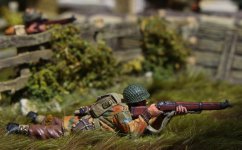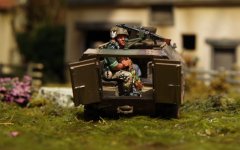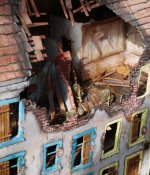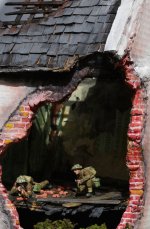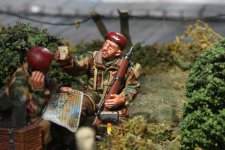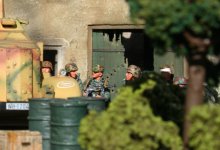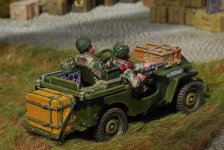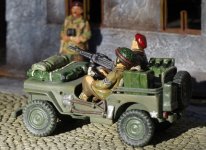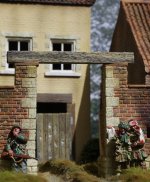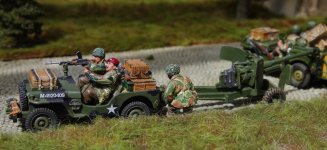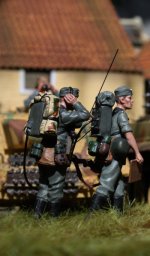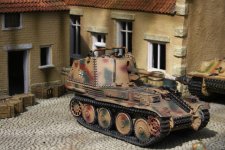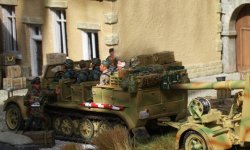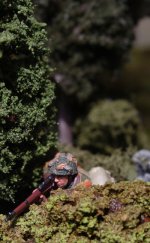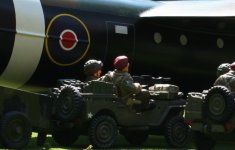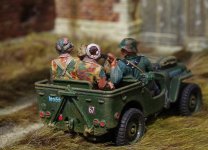panda1gen
Colonel
- Joined
- Jul 29, 2005
- Messages
- 8,158
Ref: Arnhem - 1944: The Airborne Battle by M. Middlebrook
The third lift of 'Market' should have brought in the whole of the Polish Independent Parachute Brigade Group (less its Light Artillery Battery for which no gliders were available) and part of the American 878th Airborne Aviation Engineer Battalion whose task would have been to construct a forward fighter strip in the Arnhem area.
A large supply-dropping mission would also be flown to Arnhem by 101 Stirlings and 63 Dakotas. The American engineers were to have been carried in ten Hamilcars towed by Halifaxes from Tarrant Rushton, but their part in the operation was postponed because the situation at Arnhem was so serious; their part in the operation would eventually be cancelled.
Another postponement was caused by the weather; it was so poor at the American troop-carrier airfields, Spanhoe and Saltby, that it was declared unsafe for the C-47s to take off and assemble into their formations, so the whole of the Polish parachute lift was also postponed by at least one day. This was a severe set-back for the British troops fighting at Arnhem.
The flight of the thirty-five Horsa gliders for the Polish lift did go ahead when the weather eventually cleared in southern England to allow take-offs at Tarrant Rushton and Keevil at noon, several hours late. Also taking off were seven Horsas and one Hamilcar which had aborted from the first or second lifts.
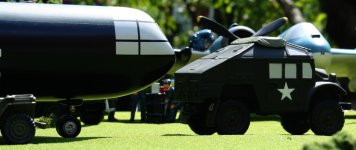
The Polish gliders contained two troops of five guns each from the Anti-Tank Battery, part of the Medical Company and some of the brigade's jeep transport. Both the supply-dropping flight, which came in first, and the tug-and-glider force were flying the southern route - in over the friendly territory of Belgium and then turning north to fly close to the corridor along which the ground forces were advancing. This was a longer but hopefully safer route than the northern one used on the first two Arnhem lifts.
The glider force suffered considerable depletion before reaching the Arnhem area. Seven Horsas suffered various problems and force-landed either in England, the North Sea or in Belgium, where the only Hamilcar also went down. A further seven Horsas were lost over Holland, six with tow ropes cut by flak and the seventh destroyed by a direct hit on its nose compartment. That glider was seen to disintegrate and its contents spill out, killing the two Polish anti-tank gunners and the glider pilots. It is estimated that only twenty-eight of the gliders with Polish loads and two of the ones carrying British troops from previous lifts arrived in the Arnhem area.
One report suggested that the escort ....
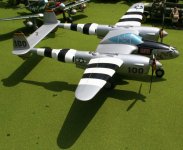
... and flak-suppression fighter force failed to rendezvous with either the supply-dropping aircraft or the glider force.
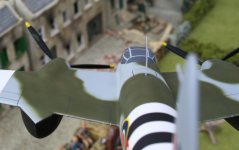
This meant there was nothing to combat the effect of the flak batteries which the Germans had assembled on the approach to Arnhem.
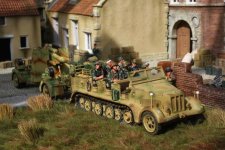
The supply-dropping aircraft lost nine Stirlings and four Dakotas from flak; see later. The tug aircraft and the glider force escaped the worst of the fire, because they were flying at a greater height, and none was lost on the final approach. However, the gliders had to descend through part of the flak barrage and German small-arms fire. Several were damaged but only one seriously, crashing just before reaching the landing zone.
This was probably the glider observed from his bedroom window in Oosterbeek by a young Dutchman, Sjoert Schwitters:
I watched a German light anti-aircraft firing at the gliders. I saw one of them hit. There was an explosion - the nose of the glider seemed to have been shot off - and I saw soldiers and items of equipment, a jeep perhaps and other items, all falling out. It was a terrible sight, and I hated the Germans for what they were doing – all those young men dying.

The third lift of 'Market' should have brought in the whole of the Polish Independent Parachute Brigade Group (less its Light Artillery Battery for which no gliders were available) and part of the American 878th Airborne Aviation Engineer Battalion whose task would have been to construct a forward fighter strip in the Arnhem area.
A large supply-dropping mission would also be flown to Arnhem by 101 Stirlings and 63 Dakotas. The American engineers were to have been carried in ten Hamilcars towed by Halifaxes from Tarrant Rushton, but their part in the operation was postponed because the situation at Arnhem was so serious; their part in the operation would eventually be cancelled.
Another postponement was caused by the weather; it was so poor at the American troop-carrier airfields, Spanhoe and Saltby, that it was declared unsafe for the C-47s to take off and assemble into their formations, so the whole of the Polish parachute lift was also postponed by at least one day. This was a severe set-back for the British troops fighting at Arnhem.
The flight of the thirty-five Horsa gliders for the Polish lift did go ahead when the weather eventually cleared in southern England to allow take-offs at Tarrant Rushton and Keevil at noon, several hours late. Also taking off were seven Horsas and one Hamilcar which had aborted from the first or second lifts.

The Polish gliders contained two troops of five guns each from the Anti-Tank Battery, part of the Medical Company and some of the brigade's jeep transport. Both the supply-dropping flight, which came in first, and the tug-and-glider force were flying the southern route - in over the friendly territory of Belgium and then turning north to fly close to the corridor along which the ground forces were advancing. This was a longer but hopefully safer route than the northern one used on the first two Arnhem lifts.
The glider force suffered considerable depletion before reaching the Arnhem area. Seven Horsas suffered various problems and force-landed either in England, the North Sea or in Belgium, where the only Hamilcar also went down. A further seven Horsas were lost over Holland, six with tow ropes cut by flak and the seventh destroyed by a direct hit on its nose compartment. That glider was seen to disintegrate and its contents spill out, killing the two Polish anti-tank gunners and the glider pilots. It is estimated that only twenty-eight of the gliders with Polish loads and two of the ones carrying British troops from previous lifts arrived in the Arnhem area.
One report suggested that the escort ....

... and flak-suppression fighter force failed to rendezvous with either the supply-dropping aircraft or the glider force.

This meant there was nothing to combat the effect of the flak batteries which the Germans had assembled on the approach to Arnhem.

The supply-dropping aircraft lost nine Stirlings and four Dakotas from flak; see later. The tug aircraft and the glider force escaped the worst of the fire, because they were flying at a greater height, and none was lost on the final approach. However, the gliders had to descend through part of the flak barrage and German small-arms fire. Several were damaged but only one seriously, crashing just before reaching the landing zone.
This was probably the glider observed from his bedroom window in Oosterbeek by a young Dutchman, Sjoert Schwitters:
I watched a German light anti-aircraft firing at the gliders. I saw one of them hit. There was an explosion - the nose of the glider seemed to have been shot off - and I saw soldiers and items of equipment, a jeep perhaps and other items, all falling out. It was a terrible sight, and I hated the Germans for what they were doing – all those young men dying.



